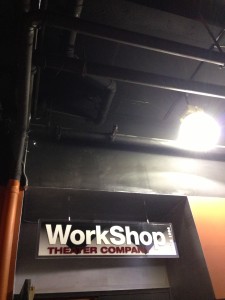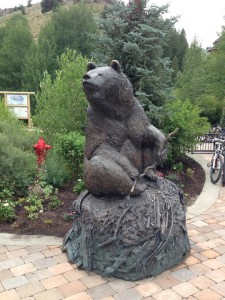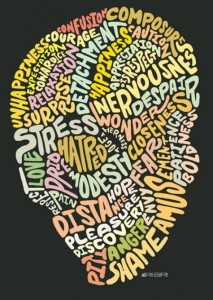How to find the right public speaking venue to magnify your message
 Last week, I went to see a play at the Midtown International Theatre Festival in New York City. “The Past is Still Ahead” by Sophia Romma is about Russia’s famous poet Marina Tsvetaeva, who “revisits the tumultuously tragic and sexy events of her life – just before succumbing to ‘suicide’ at the hands of the Soviet Secret Police in 1941 while exiled in Siberia.” It was a dynamic performance that captured the creative power, vivacity and emotional turmoil of the poet as she recalled her visions of life, people, romance with some of the most prominent poets of her time, as well as the social and political devastation of Russia after the revolution.
Last week, I went to see a play at the Midtown International Theatre Festival in New York City. “The Past is Still Ahead” by Sophia Romma is about Russia’s famous poet Marina Tsvetaeva, who “revisits the tumultuously tragic and sexy events of her life – just before succumbing to ‘suicide’ at the hands of the Soviet Secret Police in 1941 while exiled in Siberia.” It was a dynamic performance that captured the creative power, vivacity and emotional turmoil of the poet as she recalled her visions of life, people, romance with some of the most prominent poets of her time, as well as the social and political devastation of Russia after the revolution.
As I was reflecting on the play, I couldn’t help but notice the influence of the space in which the play was performed. It was a small theater with just four raised rows of seats with about forty seats in total. The stage was on the same level as the floor and the first row. The walls, the ceiling and the floors were black. The decorations were set to be the house of Marina Tsvetaeva in Elabuga. A large desk where she spent much time writing occupied a prominent spot. The intimate nature of the space with its stark features drew in the audience as if they were in that house too, magnifying the impact of the words and acting.
It made me think about the effect of public speaking venues on the message. Speakers and trainers may not always have a choice since organizers often choose the venue for them. Many events take place in large auditoriums, conference rooms, or seminar rooms of hotels. However, when you create your own event, it may be useful to approach the question of space more carefully and creatively. If you plan an upcoming seminar or workshop and wonder where you should have it, here are some possible criteria to use when choosing a public speaking venue:
- Size
- Location
- Cost
- Accessibility
- Proximity to public transportation
- Acoustics
- The level of noise outside
- Internet and wiring for the AV equipment you may need
- Seating arrangements
- Possibility of catering and serving food and drinks
- Temperature control
- Lighting
- Overall ambiance and comfort (colors, textures, smells, etc.)
- Logistics and support.
I have been hosting a book club meetup in a local Barnes & Noble for almost four years now. While it may not be an ideal spot because it is open and can get noisy, it is also centrally located in a large mall with ample parking space. Because we are visible to other shoppers, people have stopped by to learn more about the club and some of them joined us. Newcomers find the formality of the space welcoming since we don’t look like a closed group. We have a circular arrangement of chairs that promotes good interactions. People don’t feel obligated to buy coffee or food, but they can if they want to because we are right next to a café. It doesn’t cost me anything to host the book club there, and the book store puts us on their printed and online calendar of events. In addition, we all love books, so it seems a natural place to visit.
The right public speaking venue is likely to be a product of careful research and beneficial collaboration, and it can make it easier for you to market to and attract your ideal audience. Here are some questions to consider when selecting a proper venue:
- What atmosphere do you want to create for your audience?
- What type of space is best aligned with your brand and your message?
- How do you want your audience to feel before, during and after your presentation?
- How do you want to feel in the space?
- What can you bring to the venue to make it “your own”?
- What will your audience members see, touch, and hear when they come in?
- What will they be doing during your presentation, besides listening: working in groups, writing notes, drawing, watching a video, etc.?
- What seating arrangement will support your objectives and your audience’s needs best?
- How do you want your audience to move in the room from the time they arrive till the end when they may want to talk to you or among themselves or place an order?
Keeping your criteria and your needs in mind, here are some venue options to consider:
- Hotels (conference rooms, seminar rooms, ballrooms, etc.)
- Libraries
- Churches
- Government buildings that may have space available for public use
- Coworking spaces
- Restaurants or coffee shops that may have private rooms for meetings
- Gyms
- Yoga studios (may be a perfect spot for health & wellness workshops)
- Stores with a theme that supports your topic (for example, book signing/reading in a book store or a wellness workshop in a health store)
- Wellness centers
- Dance studios
- Art galleries and art studios
- Theaters
What kind of venue would magnify your message? What are your favorite off-the-beaten-path spaces?




